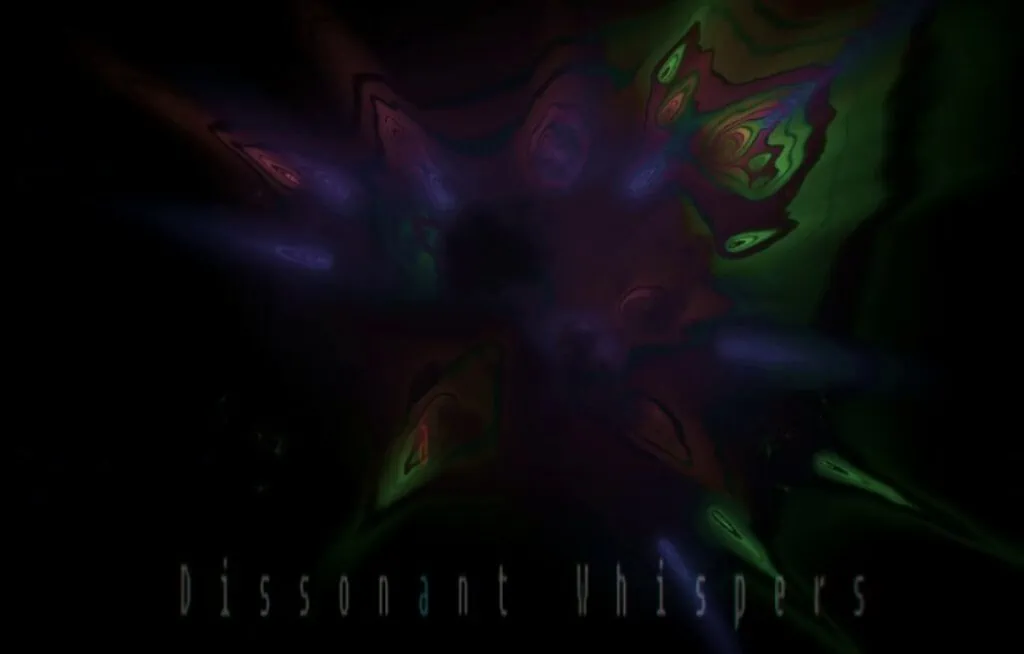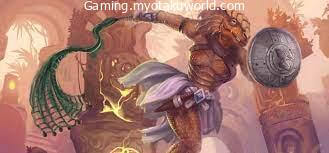This Dissonant Whispers 5e guide will tell you everything you need to know about it. Dissonant Whispers is a 1st level magic spell on the bard’s spell list in D&D 5e.
When you cast the spell, you choose one species and whisper a tune that doesn’t fit together. They have to roll Wisdom against your spell save DC.
The spell does 3d6 points of mental damage to the target. If the target succeeds on a saving throw, the damage is cut in half.
Also, if the target fails the saving throw, they must immediately run away from you as their response. Even though they won’t run off a hill or into a pit, a player with a lot of imagination can do a lot with this spell.
The spell only needs verbal parts and takes one move. You only need to be able to talk to cast this spell, so you can do it even if your hands are full of a sword, shield, or instrument. In one of my games, it became clear that this spell was a great way to target enemies, even if you were in jail or had your hands tied.
The description also says that only your target can hear the melody you whisper, so you could argue that no one else even knows you’ve cast the magic.
As long as your target can hear you, the spell will work. To use this power, you don’t even have to be able to see your target. But you do need a clear way to reach the goal.
If you are completely hidden, the magic won’t work because it can’t reach your target. This means that you can’t cast a spell on someone in the next room of the basement who you hear talking.
At Higher Levels
When this spell is cast using a spell space of a higher level, it does 1d6 more damage for each level higher.
The spell’s damage doesn’t grow very well, but it’s a great use of a 1st level spell slot, especially in the 1st and 2nd tiers of play.
How to get Dissonant Whispers

Taking at least one level as a bard is the easiest way to learn this skill. Since this is a 1st level skill, you get it as soon as you get any bard levels.
The Aberrant Mind Sorcerer and The Great Old One Warlock are the two types that have Dissonant Whispers on their list of spells. This spell is great for a magician to have because it works well with the Twined Spell metamagic.
As a warlock levels up, your spells are naturally cast at a higher level, and you only have two spell slots until 11th level. I’ve found that using a 5th-level spell slot to cast this spell is never a good idea when you can target someone with Hold Monster or any other powerful warlock magic.
From Guildmaster’s Guide to Ravnica, you can also learn how to use this card at the Rakdos Guild. This is information about the setting, so you would have to ask your DM if this is something that happens in your game.
Last, this power can be learned by anyone with the Magic Initiate or Fey Touched feats. The first one gives you two cantrips and one 1st-level spell from a certain list.
Bard is a great way to get access to Vicious Mockery, something like Minor Illusion, and Dissonant Whispers. The big problem with this feat is that you can only cast the 1st-level power once a day.
Fey Touched, which raises one of your mental ability scores and gives you access to Misty Step and one 1st-level spell from the divination or magic schools, is by far the best choice.
Dissonant Whispers fits the bill because it is a magic spell of the first level. You can also cast both spells once without using a spell slot, and you can use your own spell spaces to cast them.
What does dissonant whispers do in 5e?
Dissonant Whispers makes the victim make a Wisdom saving throw, and if they fail, they take 3d6 psychic damage. If they succeed, they only take half as much damage.
If the creature fails its save, it must also use its response to move as fast as it can away from the spellcaster, but it won’t move into obviously dangerous ground.
Lastly, the spell only works if the target can hear the spellcaster. This means that it won’t work on animals that have lost their hearing or are effectively deaf.
So, now let’s talk about the many, many rules that go along with the spell.
Optimizing Tips for Dissonant Whispers
Opportunity Attacks

If you want to get this spell and use it well, you need to know how it works with other things. The spell says that the victim must use their reaction to move as far away from you as possible if they fail their saving throw.
Even though you can’t make them run off a cliff, this movement makes any friends they run past attack.
This isn’t immediately clear because, in D&D, forced movement doesn’t generally lead to chance attacks. I’ve even seen Matt Mercer rule in Critical Role that Dissonant Whispers doesn’t make opportunity strikes happen.
But the Player’s Handbook says on page 195 that an opportunity attack is not made when someone teleports or goes out of reach without moving, acting, or reacting.
Most forced movement, like that caused by the Telekinetic or Crusher feats or powers like Thunderwave, happens when the save is failed.
But Dissonant Whispers tells us that the enemy moves away from us based on how they respond to us. So, this gives attackers a chance to strike.
So, what should you do with this info? It’s easy! Before you cast this spell, move so that your enemy will go through as many of your friends as possible. If you’re a fighting character, get close to them before you cast this spell and hit them as they leave with your sword.
On the other hand, an enemy can’t move away from you if they’ve already used their response this round. If you want to cast this spell, you should plan ahead. Even when it’s not your turn, pay attention to who has and hasn’t used their reply.
Remember that when it’s a character’s turn, they get their response back. If you want to use Dissonant Whispers on a certain enemy, all you have to do is pay attention between their turn and yours.
Burning an Enemy’s Reaction
To force an enemy to use their reaction is a very difficult way to use this spell. For example, when fighting mages, they have to think about how to use Absorb Elements, Shield, and Counterspell, which are all great defense spells.
If you cast Dissonant Whispers on an enemy mage and they fail their save, you force them to use their reaction, making it impossible for them to cast any response spells for the rest of the round. If the order of who goes first doesn’t work in your favor, you can get ready to cast Dissonant Whispers as soon as it’s their turn.
You should be able to use up their response right away, if possible. Just remember that getting ready to do something also needs you to do something.
Any way you look at it, this spell is good against enemy spellcasters because it burns their response. Also, liches and other spellcasters with legendary resistance aren’t likely to use it on a weak 1st level spell.
But the rules don’t say that a spellcaster has to know what spell you’re going to cast before you do, so a monster might not know you’re casting a 1st-level spell and still cast Counterspell.
Obviously Dangerous Ground

One of the most important parts of Dissonant Whispers is that the enemy can’t run straight into clearly dangerous ground. This means you can use Thunderwave to push someone off a cliff, but you can’t do the same thing with Dissonant Whispers.
But you can make your enemy run right into danger that isn’t clear. Set up a simple trap from the PHB’s list of tools, dig a hole and cover it with big ferns, or use an illusion to hide the danger. Your enemy won’t, for example, run off the edge of the cliff.
They will probably run instead until they get to the edge of the cliff. Use the Minor Illusion spell to make an extra piece of ground that they will think is real and fall off of, killing them.
The rules for Spike Growth say that animals that don’t see the spell being cast must roll to see if they notice the ground is dangerous. This means that animals who see the spell being cast can tell it’s dangerous. But people often have to look into an illusion spell to figure out it’s a trick.
For Minor Illusion, a creature can touch the picture to figure out that it’s just an illusion. In this case, their physical contact is that they both fall through it and die.
Kiting
Kiting is the technique of staying away from enemies by running away and using ranged attacks to avoid their attacks. In D&D, many monsters don’t have ranged attacks, and the ones that do aren’t as strong as their physical attacks.
Most of the time, this approach depends on the fact that your enemy is slower than you are, so you can always move backward as they move forward. With Dissonant Whispers, you can make your enemy move their speed away from you, and they can only move their speed to get back to where they started.
They will always stay away from you unless they can Dash as a free action or speed up in some other way. You can’t keep a whole group of enemies away with this method, so it works best against a single enemy.
Condition Immunities

One thing that makes this spell great, even at higher levels, is that the victim has to make a Wisdom saving throw. If they fail, they have to start running away.
The spell doesn’t make your enemy sick or hurt in any way. Some of the best magic in D&D can’t work on monsters because they are immune to conditions.
Hypnotic Pattern, for example, could be the most powerful 3rd level spell in the whole game. But the enemy has to be charmed for the result to work. So, any enemy that is immune to being charmed is also immune to the spell’s affects.
Dissonant Whispers doesn’t cause charmed, scared, or any other effect. The only requirement is that the target can hear you, which is always the case unless the DM wants to mess with you.
When & Why should I cast Dissonant Whispers?
The Dissonant Whispers power is one of the best at level 1. A character with level 1 can do 3d6 damage, which is pretty good for a low-level character.
It also gets stronger as your spell level goes up. At higher levels, there will be better spells that deal damage, but this one should be useful until mid-levels if damage is the only thing you care about.
The best thing about Dissonant Whispers is that it can move people around the field.
FAQs
Does Dissonant Whispers cause fear?
No. This spell does not apply the frightened condition, meaning that it still works on creatures immune to fear.
Does Dissonant Whispers provoke opportunity attacks?
Yes, because the target must use their reaction to move away from you, this movement provokes opportunity attacks.
Does Dissonant Whispers trigger Booming Blade?
No. The additional damage from Booming Blade is only triggered when the enemy willingly moves whereas Dissonant Whispers forces movement. However, your enemy is now at least 30 feet away from the battle and must use their movement to get back in, which will trigger the damage.
What Book is Dissonant Whispers In?
Dissonant Whispers is found in the Player’s Handbook. The description of the spell can be found on page 234.
Do you have to see a creature to cast Dissonant Whispers?
No, you don’t need to be able to see them. They only need to hear you. However, the target cannot be behind total cover such as a wall or other obstruction.









